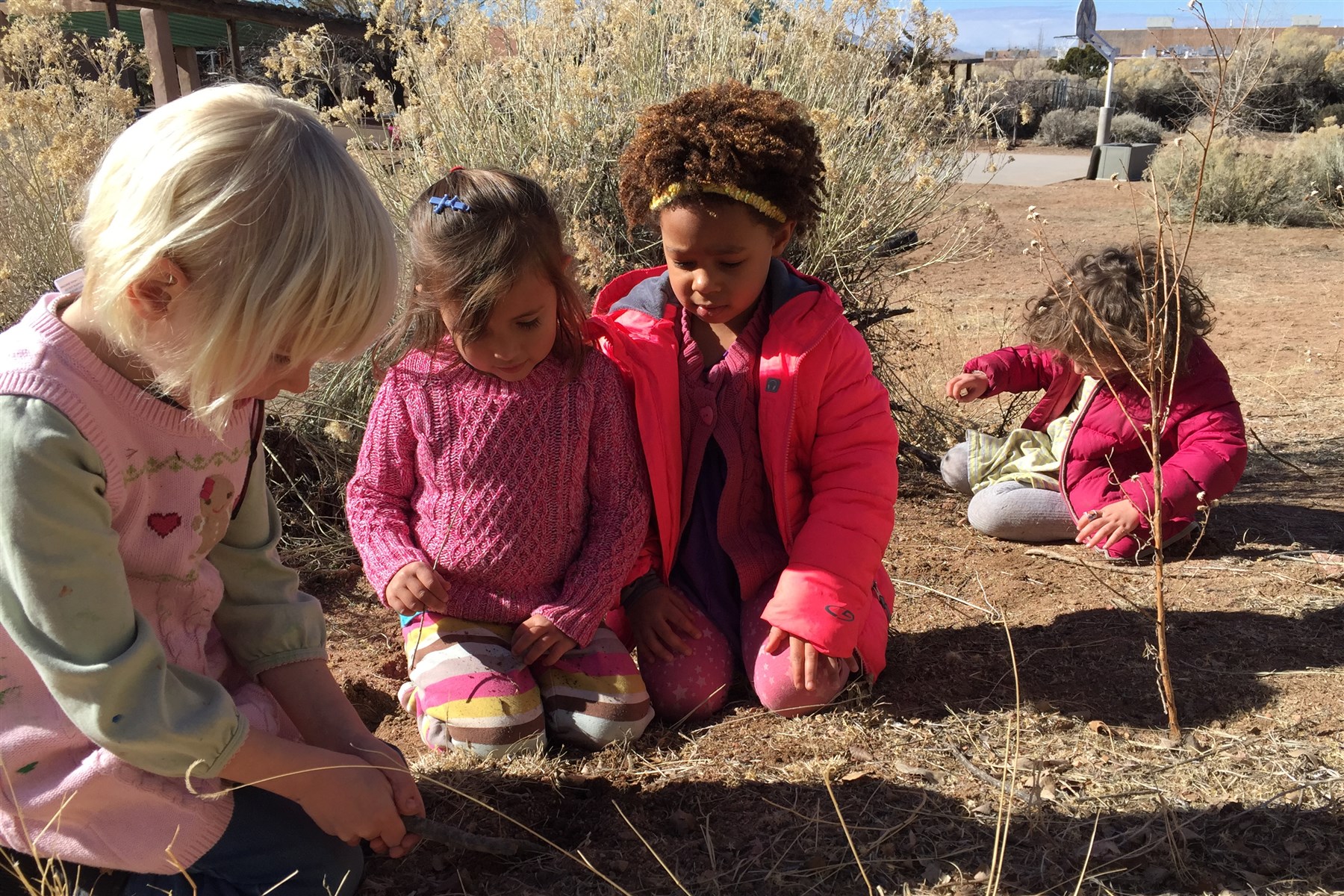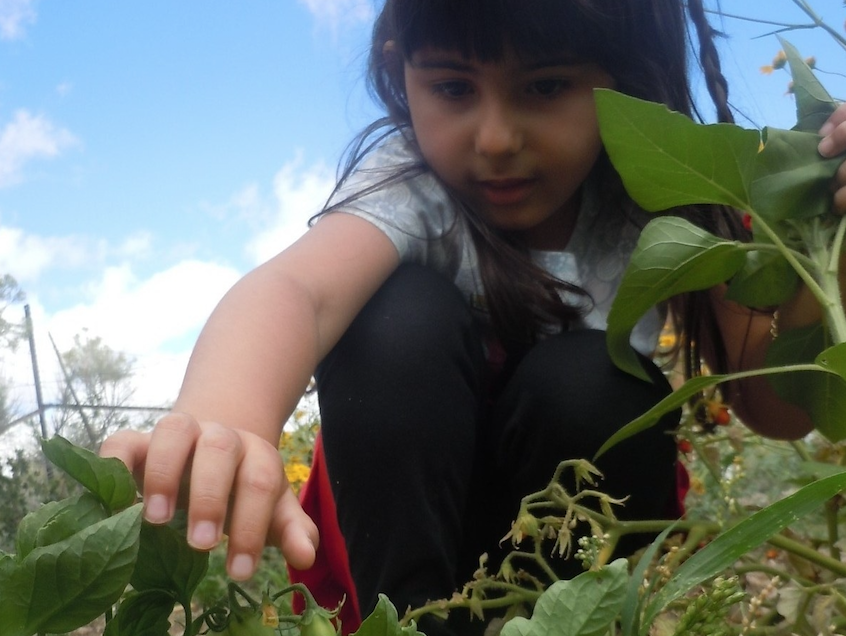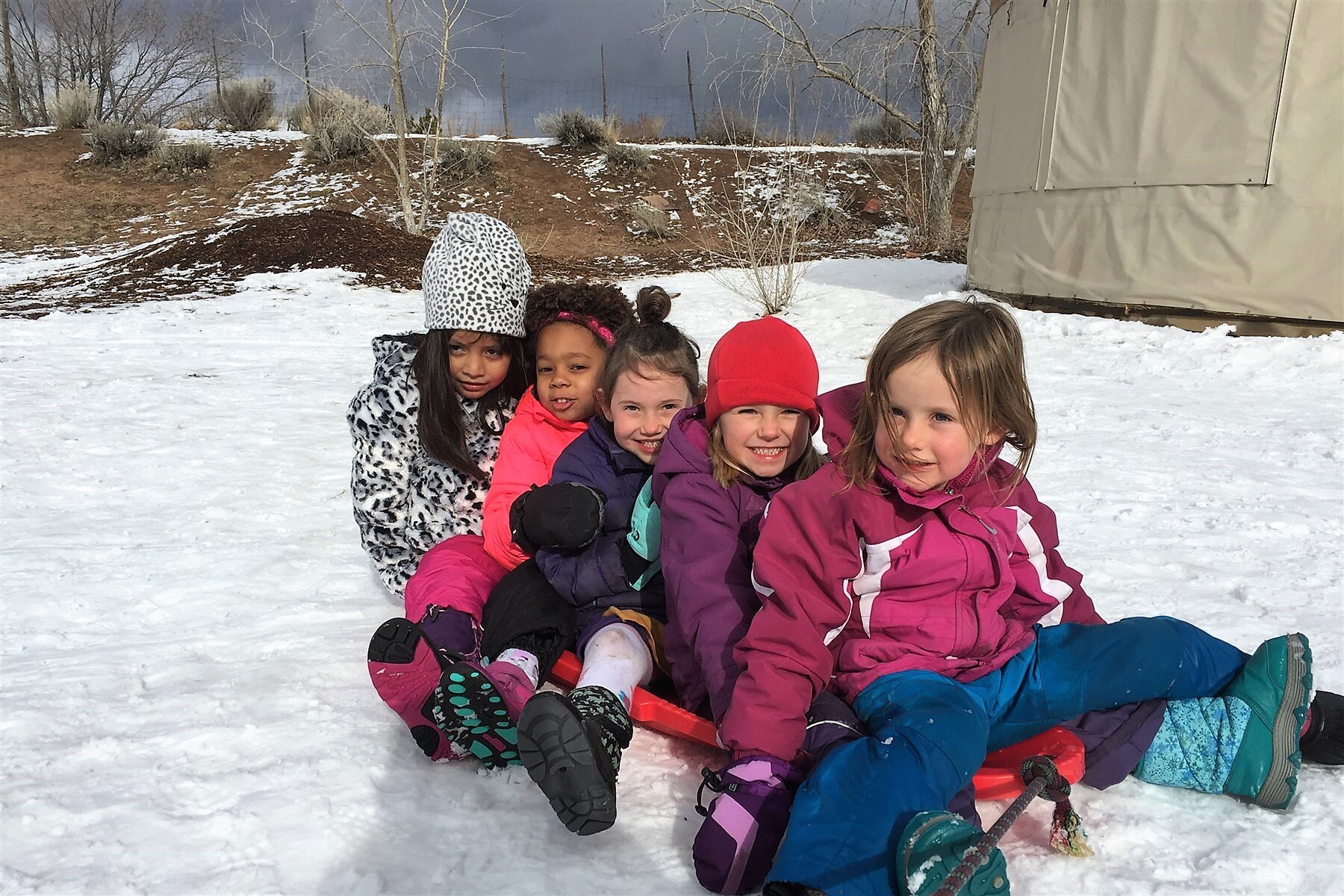All School Curricula
Little Earth School’s curriculum develops independent, life-long learners. As part of its excellent academic program, Little Earth School teachers expose their students, regardless of age, to a broad and integrated range of learning experiences, including environmental and multicultural studies, the visual arts, music, Spanish and yoga. All children learn in multiage classrooms which provide varied and multiple learning opportunities appropriate to each student’s developmental level. Research has shown that there are many benefits to multiage classrooms including: several years spent with the same teacher, absence of labeling, individualized learning opportunities, cooperation rather than competition, cross-age learning and in general a positive learning environment. The experiential curriculum fosters critical thinking and problem solving skills, which children can apply meaningfully to real life situations. Beginning in the preschool-kindergarten and continuing through the elementary grades, teachers incorporate the nationally recognized, comprehensive and developmentally appropriate curriculum, Hand to Mind, which as its name suggests, promotes learning beginning with hands-on activities in order to build the foundation for abstract and symbolic thinking necessary for more complex learning. The Hand to Mind curriculum provides learning opportunities in mathematics, language arts and science.
Teachers recognize and respect each child for who s/he is, including each child’s cultural and ethnic heritage. Teachers guide children through their daily social interactions in order to build each child’s social-emotional competence and positive relationships with self and others, thereby encouraging their conscious, cooperative and productive participation as members of a community. We acknowledge the fundamental importance of each child's social-emotional development as an essential component of our learning environment and curriculum. Teachers have been trained in and integrate the tools and expertise provided by the nationally recognized Conscious Discipline protocol to support children's social-emotional development. We understand that young children need time and adult guidance to develop their social-emotional competence. We also recognize our responsibility to foster communication, cooperation and collaboration between home and school in ways that enhance a child's social-emotional development.
The visual and performing arts have always been central features of Little Earth School’s integrated curriculum. As educators we recognize that children’s creativity and imagination are essential tools in the learning process. The ability to take risks and explore putting materials, movements, rhythms or ideas together in new ways supports learning in all academic areas. In addition the performing arts allows for “cross over” between the right and left-brain hemispheres which enhances children’s learning capabilities. The integration of the arts is also critical to the important development of an aesthetic sense in the children.
As part of our music program, children sing in their classrooms as well as twice a week with the entire school. More formal music instruction takes place with an experienced and devoted music teacher once per week. Again depending on their age, children sing, play musical games, learn choral music and learn to play rhythm instruments and the ukulele. As part of the school’s multicultural curriculum, the music program also introduces music from other cultures. Children have the opportunity to perform several times during the year at special all-school events.
Classroom teachers use the visual arts as an integral part of learning in every subject area.
In addition, using a wide variety of age appropriate art media, children have the opportunity to
work on special art projects in the school’s dedicated art studio. Visiting artists complement the work done by classroom teachers, offering more long-term projects of greater complexity in various art genres.
As part Little Earth School’s social studies/multicultural curriculum children are given many opportunities to experience, get to know, and feel comfortable with, diversity. These experiences occur primarily within the school community—making children aware of the diversity present in the school. This may take many forms depending on the age of the children: sharing family traditions, sharing experiences of travel abroad, discussion of historical and current events, study of human rights issues and heroes, making and learning to play games and listening to music and learning songs that come from many cultures.
Through the social studies curriculum children also learn to assume responsibility for conflict resolution through practice and participation and to develop tools to resolve conflict constructively, including recognizing and taking action with respect to those behaviors which may involve bias directed at a child’s individual or group identity. Teachers incorporate the social tools provided in the Second Step curriculum to support children's development with regard to conflict resolution.
Rather than observe traditional holidays, we create our own, instilling in children a sense of the daily celebration of life. The school community’s many special celebrations include Día del Niño, Community Feast, Community Sing for Peace and Justice, Winter Solstice and Spring Equinox Celebrations, an End of the Year Picnic, child-inspired museums, “garden parties”, puppet shows, music and theatrical performances. There is a community celebration in which parents participate about once a month throughout the school year and two community workdays a year.
A dedicated Spanish teacher who is passionate about the Spanish language and second language acquisition works with the children
in each classroom. Children learn Spanish through cooperative games, literature, songs,
art activities and other projects, which are interesting and meaningful to them. Translation is used minimally.
The curriculum replicates how children learned their first language – with many opportunities to hear the language and many nonverbal cues. Listening provides the foundation for the development of speaking, reading and writing skills. The goal of the Spanish program is not only to have children learn a second language, but also to increase their cultural sensitivity and understanding, and their interest in, and comfort with, difference. In addition, research has shown that learning a second language also builds children’s problem solving skills through enhanced cognitive outcomes, including flexibility, memory and attention.
Little Earth School is situated on a rural acre. Children spend substantial amounts of time outdoors, during which teachers may use the natural environment as an outdoor classroom, a setting for organized field games or provide opportunities for unstructured play. Teachers view adequate time for play and time outdoors as essential components of the school’s curriculum. Little Earth School recognizes the profound importance and significant developmental impact of allowing children to spend significant amounts of time outdoors, to have direct experiences with nature, in organized activities as well as in unstructured play. The natural world inspires children, develops their sense of humility and wonder and their sense of themselves as “doers” rather than spectators. We believe in the educational value of substantial recess time every day. Our large outdoor space is an extension of our indoor classrooms. A shaded pavilion is a welcoming environment for learning. A garden area and many trees, including a shady grove of large cottonwoods, invite exploration and provide a variety of opportunities to teach about the natural world. In addition to a great open space conducive to running, sledding, organized non-competitive games and fantasy play, there are wagons and tricycles, climbing walls and other climbing and play structures, a rope bridge, swings, tires and large, equipped sandboxes. Away from school, children participate in an annual ski program, hikes and camping trips.
Low teacher-student ratios: The Toddler classroom has a teacher-student ratio of 1:6; the Preschool-Kindergarten classroom, 1:8; the Elementary classrooms have a maximum of 15 children per classroom and at 13 children, we add a teacher assistant.









